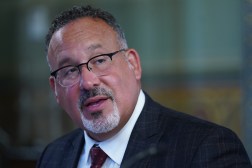Colleges raise IT spending to combat enrollment decline, survey suggests

Colleges and universities are under pressure to attract more students, and most are willing to spend more on technology to improve the student experience, according to a survey published Monday by the student information system provider Jenzabar.
The survey, which includes responses from 149 higher education administrators at two and four-year institutions, found nearly two-thirds, or 64%, planning to increase their technology spending in the 2023-24 academic year. This is the second year in a row that a majority of institutions have indicated plans to increase their tech budgets, according to Jenzabar.
These results are in-line with findings from the Tambellini Group, a higher education research firm, which reported earlier this year that spending on student information systems increased significantly in 2021 – reversing a five-year decline. This investment was symbolic of efforts to improve the student experience following 2020 lurch toward remote instruction, Tambellini found.
In order to attract new students in an increasingly competitive landscape, more institutions are investing in technology, offering hybrid learning options and aligning with local workforce needs more and more, the Jenzabar report found.
“Schools with declining enrollments are more likely than those with steady or rising enrollments to create flexible pathways to education,” the report reads. “These schools have realized that to survive, they need to re-evaluate and revamp their education offerings.”
Amid the 45% of respondents who reported that enrollment had declined at their institution in the past year, 62% said they currently offer, or plan to offer, non-credit-bearing credentials or non-credit-bearing courses intended to attract mid-career learner. The survey also found that 68% of schools with declining enrollment plan to partner with local businesses to provide workforce training. Among schools that did not report an enrollment dip, just 40% said they would do so.
A vast majority of respondents, 86%, said their institution is currently, or planning to offer hybrid learning options to students in order to make their course offerings more flexible and accessible.




